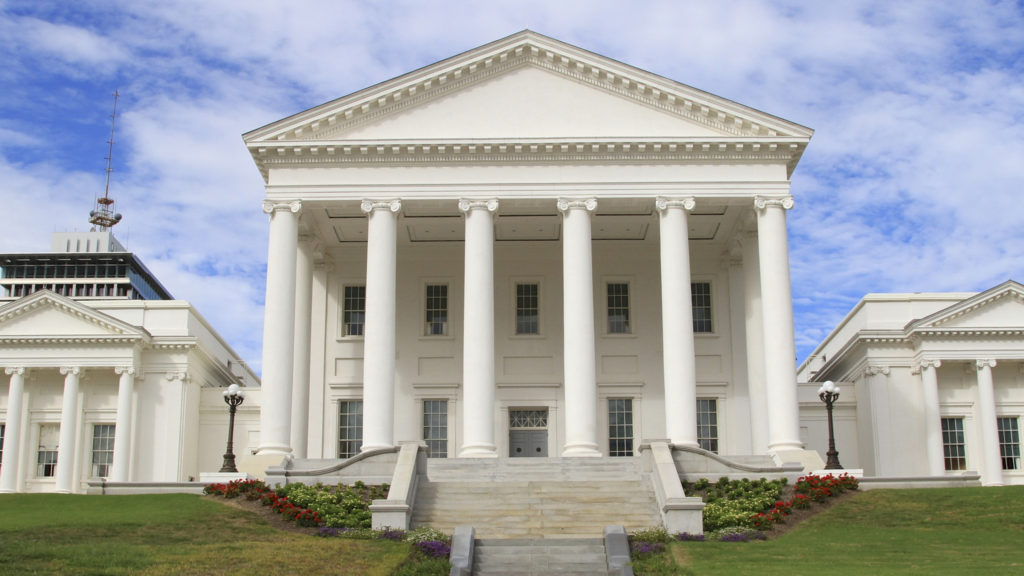The three-judge panel of Virginia’s federal district court has voted 2-1 that 11 of the Commonwealth’s legislative districts were drawn in a discriminatory fashion against African-Americans, which must be redone by the General Assembly by the end of October. Judge Barbara Milano Keenan said, “Overwhelming evidence in this case shows that, contrary to… constitutional mandate, the state has sorted voters into districts based on the color of their skin,” according to the Washington Post.
Obama-era attorney general Eric Holder, who leads the redistricting group that supported the challenge, called the ruling a “victory for voting rights in Virginia.” He also said, “Since these maps were put in place in 2011, African Americans have had their voting power diluted and their voices diminished. That will now change.”
Almost immediately, the state’s Republicans announced that they plan to appeal to the U.S. Supreme Court.
“It would be premature to even consider any action by the General Assembly until the Supreme Court speaks on these districts,” said Speaker of the House Kirk Cox (R-Colonial Heights). The Speaker cited the Supreme Court’s recent decision to overturn a lower-court ruling in a Texas redistricting case.
In Abbott v. Perez (2018), the Court ruled in a 5-4 decision that overturned the decision from the Texas District Court which disregarded the, “presumption of good faith on the part of the Texas Legislature and improperly reversed the burden of proof in requiring the state to show a lack of discriminatory intent in adopting new districting plans…”
A few of the legislative districts in question were upheld by the Supreme Court via the “effects test.” Under the jurisprudence of Thornburg v. Gingles (1986), a plaintiff must establish three factors to prove a permissible political district:
- “A geographically compact minority population sufficient to constitute a majority in a single-member district.”
- “Political cohesion among the members of the minority group.”
- “Bloc voting by the majority to defeat the minority’s preferred candidate.”
After creating that metric, the plaintiff must then prove that the minority group’s votes are diluted by the district lines under the totality of the circumstances. To overturn the lower court’s ruling, the Supreme Court must find that race was the predominant motive in drawing the districts the way in which they are today in Virginia.
This case has already been to court once. In a similar case, Vesilind v. Virginia Board of Elections (2018), the plaintiffs in the case argued that Virginia’s 2011 legislative districts violate the state’s constitution. They claimed that the General Assembly improperly subordinated the constitutional requirement of compactness to achieve political objectives, such as political advantage and incumbent protection.
The Court found there was no preponderance of evidence to conclude that Virginia’s legislative districts are drawn in an unconstitutional manner in regards to the compactness and the protection of incumbents within a legislative district. Nevertheless, after the second trial, the panel of judges came to a different conclusion, pointing to boundary lines that were, “frequently small residential roads separating predominantly white and predominantly black neighborhoods,” as well as heavily black municipalities that were divided between multiple districts.
A demographer who consulted for Republicans gave non-racial justifications for the lines, but the judges concluded the reasons were, “not credible.”
Republicans were in charge of the House and Democrats controlled the state Senate when the legislative districts were redrawn after the 2010 Census. Under a deal hashed out between the two chambers, Republicans were able to draw the House lines and the Democrats drew them for the Senate.
Interestingly, the state’s court also found no evidence the heavily black districts in question were drawn to comply with the Voting Rights Act, allowing minorities to elect a candidate of their choice, even though the map was supported by members of the Legislative Black Caucus when it was drawn.
“Politically, this puts the House of Delegates completely up in the air,” said Brian Cannon, executive director of OneVirginia2021, a group that advocates for non-partisan redistricting. House Republican lost 15 seats in 2017 to make a slim 51-49 GOP majority.
With the next state legislature election scheduled for November 2019, Republicans could fare even worse if the lines a drawn for different forms of favorability. However, considering the Supreme Court has backed decision to overthrow lower court rulings similar to the most recent one in Virginia, the GOP has a good chance of getting the better deal on this.
